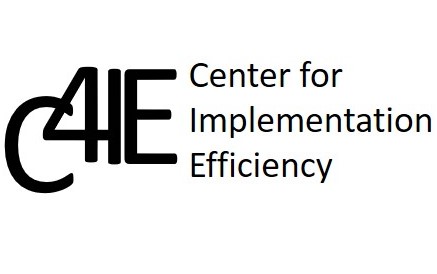Implementation tips
Global thinking
Read the article on " Value for Money: An Agenda for Global Health Funding Agencies" by Center for Global Development (CGD). It is an important discussion on efficient use of scarce resources.
Definitions
Cost Efficiency: A OECD health policy report indicates cost efficiencies in health care systems through better use of information and communication technologies. While the study covers developed countries, many of the findings are equally applicable to developing world.
Efficiency: The Development Assistance Committee of the Organisation for Economic Co-operation and Development (OECD DAC) defines efficiency as ‘a measure of how economically resources/inputs (funds, expertise, etc) are converted to result’. It is also getting the most out of the resources used. Efficiency is a broader concept focusing on both benefits and costs: a set of actions is “efficient” if it maximizes total net benefits (where “net benefits” are benefits minus costs). The resources can be time or expertise, but are most commonly financial or economic. Results can be outputs or impacts, but efficiency is also sometimes assessed on the basis of outreach and activities (e.g. cost per training or cost per beneficiaries).
Effectiveness: Effectiveness is “the extent to which the development intervention’s objectives were achieved, or are expected to be achieved, taking into account their relative importance”. Effectiveness aims to analyse the achievement of an operation’s development objectives, whereas the analysis of efficiency entails assessing the resources used and results achieved.
Cost-effectiveness: Cost-effectiveness is a concept that focuses on costs: a set of actions is “cost-effective” if it minimizes costs in achieving a stated goal.
Cost-benefit analysis: Cost-benefit analysis is a method of reaching economic decisions by comparing the costs of doing something with its benefits (Economics A-Z, by The Economist). More specifically, cost-benefit analysis is a basic tool of economic analysis in which the actual and potential costs (both private and social) of various economic decisions are weighed against actual and potential private and social benefits. Those decisions or projects yielding the highest benefit/cost ration are usually thought to be most desirable (Economic Development in the Third World (4th edition) by Michael Todaro).
Economic definitions ( source: Pay for Performance in Health Care: Methods and Approaches, RTI study)
Health economists sometimes differentiate between three types of efficiency: technical efficiency, productive efficiency, and allocative efficiency (Palmer & Torgerson, 1999; Varian, 1992).
Technical efficiency refers to the physical relation between physical inputs and outputs (in which outputs can be health care services or health outcomes). Technical efficiency is achieved when the level of output is maximized from a given set of physical inputs, but it cannot be used to compare alternative interventions, for example, in which one intervention produces the same output with less of one resource and more of another.
Productive efficiency refers to either the maximization of output for a given cost or the minimization of cost for a given level of output (note that when outputs are defined as health care services, then productive efficiency is equivalent to cost efficiency). Productive efficiency permits assessment of relative value for interventions with directly comparable outputs. It cannot, however, address the impact of reallocating resources at a broader level.
Allocative efficiency accounts for both productive efficiency and the efficiency of output distributed across the community. This type of efficiency occurs when resources are allocated to maximize the welfare of the community. Allocative efficiency implies productive efficiency, which in turn implies technical efficiency.
ICT implementation can benefit: (1) quality of care and efficient service delivery; (2) reduction in operating costs of clinical services; (3) lowering administrative/overhead costs; (4) introducing entirely new modes of care.
Comparative Cost-Effectiveness Analysis to Inform Policy in Developing Countries: A General Framework with Applications for Education: Iqbal Dhaliwal, Esther Duflo, Rachel Glennerster, Caitlin Tulloch; Abdul Latif Jameel Poverty Action Lab (J-PAL), MIT
This is a paper that discusses ‘how comparative cost-effectiveness analyses can help inform policy in developing countries and the underlying methodological assumptions necessary for performing this kind of analysis using data gathered as part of rigorous impact evaluations. This paper does not suggest a single set of “correct” assumptions, because the assumptions adopted in a cost-effectiveness analysis should reflect the perspective of the intended user.’ The paper also defines cost-effective analysis and why it is an important tool. ‘Cost-effectiveness analysis, in the simplest terms, calculates the ratio of the amount of “effect” a program achieves for a given amount of cost incurred, or conversely the amount of cost required to achieve a given impact. For program evaluation, this means measuring the impact of a program in achieving a given policy goal (for example, the extra years of schooling induced) against the cost of the program. This ratio, when calculated for a range of alternative programs addressing the same policy goal, conveys the relative impacts and costs of these programs in an easy and intuitive way.” It is important to quantify program impacts in a standard manner and also decide which costs should be included. See the link for the full report: http://www.povertyactionlab.org/publication/cost-effectiveness
Other useful resources:
- Better drug use, greater efficiency - Amanda Glassman's blog in Center for Global Development. Responsible use of medicines can bring more efficiencies, as indicated by IMS Institute study.
- Efficiency measures in Malaria programs
- Value for Money case studies of International HIV/AIDS Alliance
- Value for Money in Norway looks at reforms that are aimed at improving the quality of services (more value) and efficiency (less money) in central government.
- Value for Money: New Zealand Aid Programme
- OECD Value for money and international development: Deconstructing myths to promote a more constructive discussion
- Evaluation methods for assessing value for money
- DFID approach to value for money
- New financing aims at efficient use of resources
© Copyright Center for Implementation Efficiency
